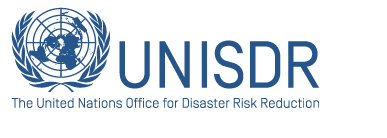-Mr. Ebrard, thank you so much for having us
-My pleasure. Welcome to our city.
- Please provide us with some context regarding Mexico City´s risks. In addition to earthquakes, what other urban risks are you facing?
-The city has the seismic risk that you mention and the last major event was in 1985. We also have an active volcano, Popocatépetl I do not expect everyone to say this, but the volcano is very close to the city. In addition, we are facing the impacts of climate change because, in a nutshell, the city was built over a lake at a high altitude, and every rainy season it is difficult for us to drain the water. And rain patterns are changing: we have more rainfall in shorter periods of time and at the same time, but we are also having more prolonged droughts, which is another risk faced by the city. Another risk is that when you live in a city this big with so many potential problems, you can lose faith in yourself and in your future..
- This is a very demanding city and it must be stated that there is a close interaction between Mexico City and its surrounding metropolitan area.
-This is an experiment; the city is an experiment, not only because of the altitude aspect I already mentioned, but also because of its size. A total of 9 million people live in the city itself, but another 12 or 13 million live in the immediately surrounding urban areas. So we are talking about a little over 22 million people in the whole conglomerate, in a valley that probably doesn’t cover 1 percent of the total area of the country. |
- Did you start getting involved in this public agenda after the 1985 earthquake? Did it somehow influence you?
- The 1985 earthquake was a debacle that caused a huge amount of destruction in the city. I was a Unit Chief at the time, a very modest position within the Mexican Government, and we, like other youth and many others, were called to participate in the city’s reconstruction program.
During the first year after the earthquake, the city experienced a huge process of housing reconstruction. A total of 40,000 houses were built and the process was being developed from different fronts. I had the opportunity to participate in the entire effort alongside many of my coworkers. So that is where I made my first contact. I was able to learn about many, many things that have to do with how you prepare for risks and what you should do when there is an emergency.
We learned a great deal from the experience of the 1985 earthquake, and I was tasked with the responsibility of organizing the first Civil Protection System to build our response capacity. Finally, once I was in the government, I could organize the city in the way I thought it needed to be organized, and things came together and I had the good fortune of having the support of the United Nations. |
-In 2010, during the World Congress on Cities and Adaptation to Climate Change, held in Germany, which also coincided with the launch of the world campaign “Making cities resilient: My city is getting ready!”, you highlighted the urgent need to work together so that we could share how to reduce urban risk and save lives. How did you integrate this and how did this urgency become a reality in the daily activities of the Mexico City government?
-The first thing we did was to organize ourselves around one single overarching idea of resilience and to bring together all of the concepts of risk; because if you don’t do it that way, you run the risk—and pardon the redundancy—of having disconnected, disperse actions, and dividing things up by sector, by theme.
You need to have a high level of cooperation, because, for example, in climate change, you can’t reduce risks if you don’t have many cities working together. That’s why an international network of 300 cities was created. Every year, the cities report on what they are doing and they accept international verification. This was established in the “the Mexico City Pact” because the agreement was reached in this city.
Regarding urban risk and global experiences, we rely on the United Nations because of the way they have systematized a number of experiences and information on what has happened in other parts of the world. This can help us save lives, and that is the important thing.
We consider that these experiences are very important in the city’s preparedness process, so that we don’t make the same mistakes made in other parts of the world. All of this is part of one single overarching idea of how to build a resilient city and how each person participates in the process —not just the government, but also society |




